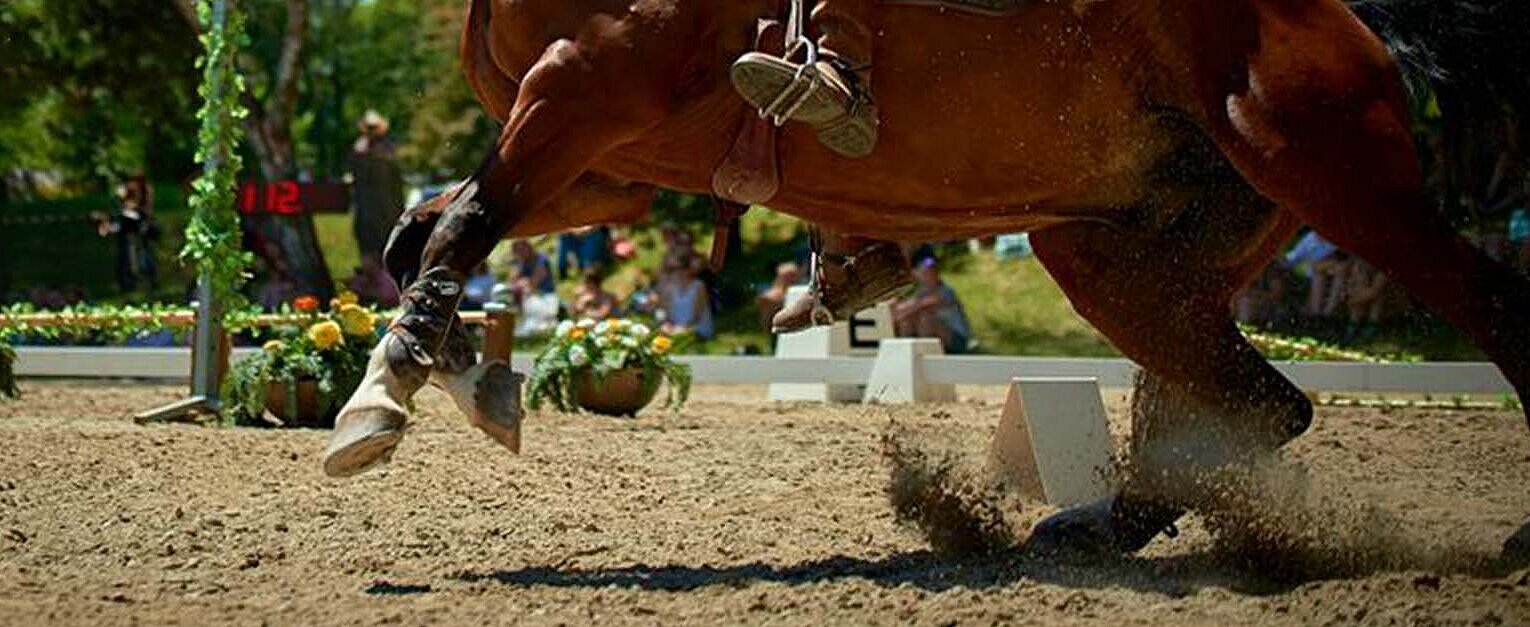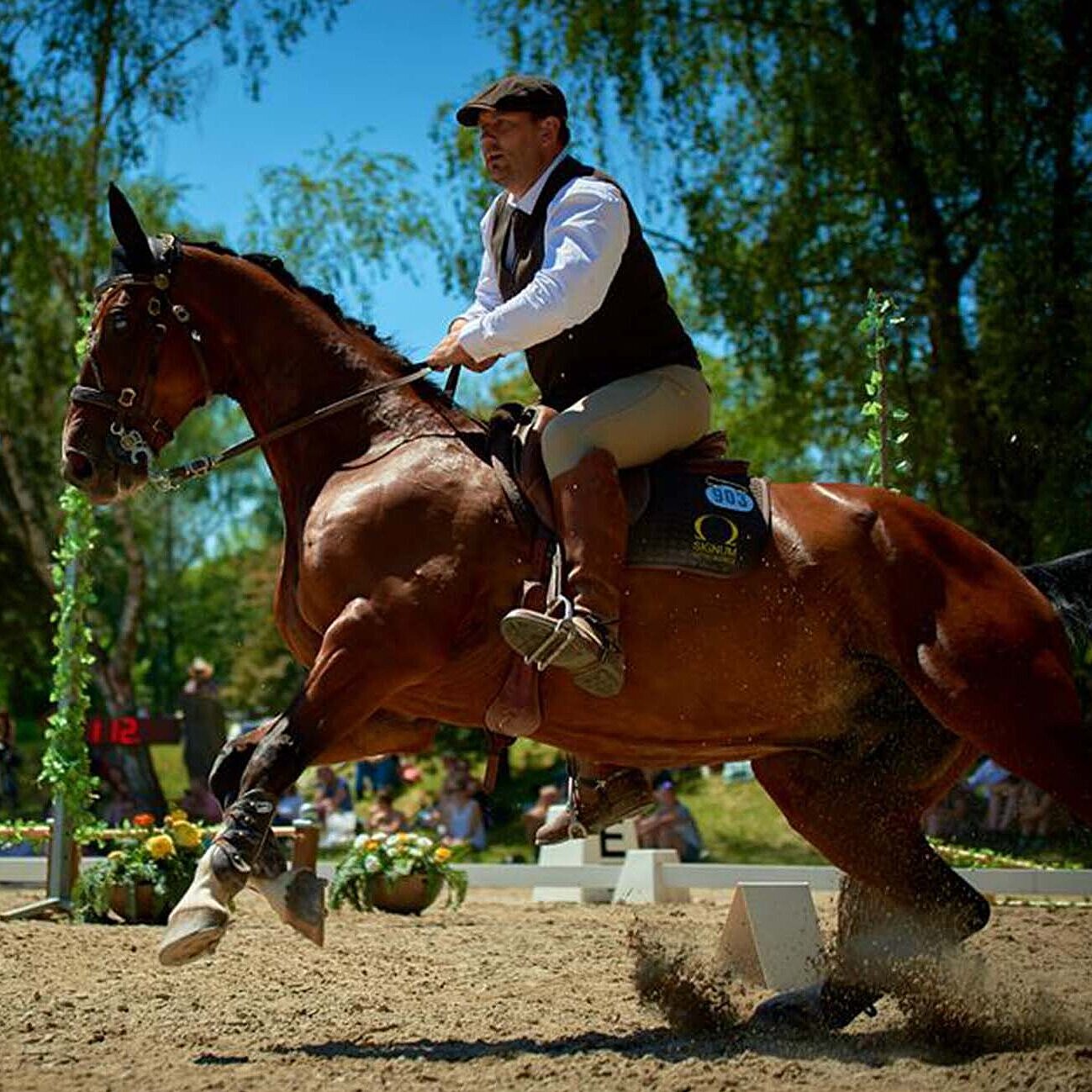What is Working Equitation?
Working Equitation is a young competition sport discipline that has developed from the tradition of southern European working riding styles such as Doma Vaquera. The individual tasks are based on the requirements of the mounted cattle herders of the various European working riding styles.
The various national working equitation disciplines can compete against each other in the Working Equitation competition sport discipline thanks to a common set of regulations and at the same time carry on their traditions.
The Working Equitation Trail
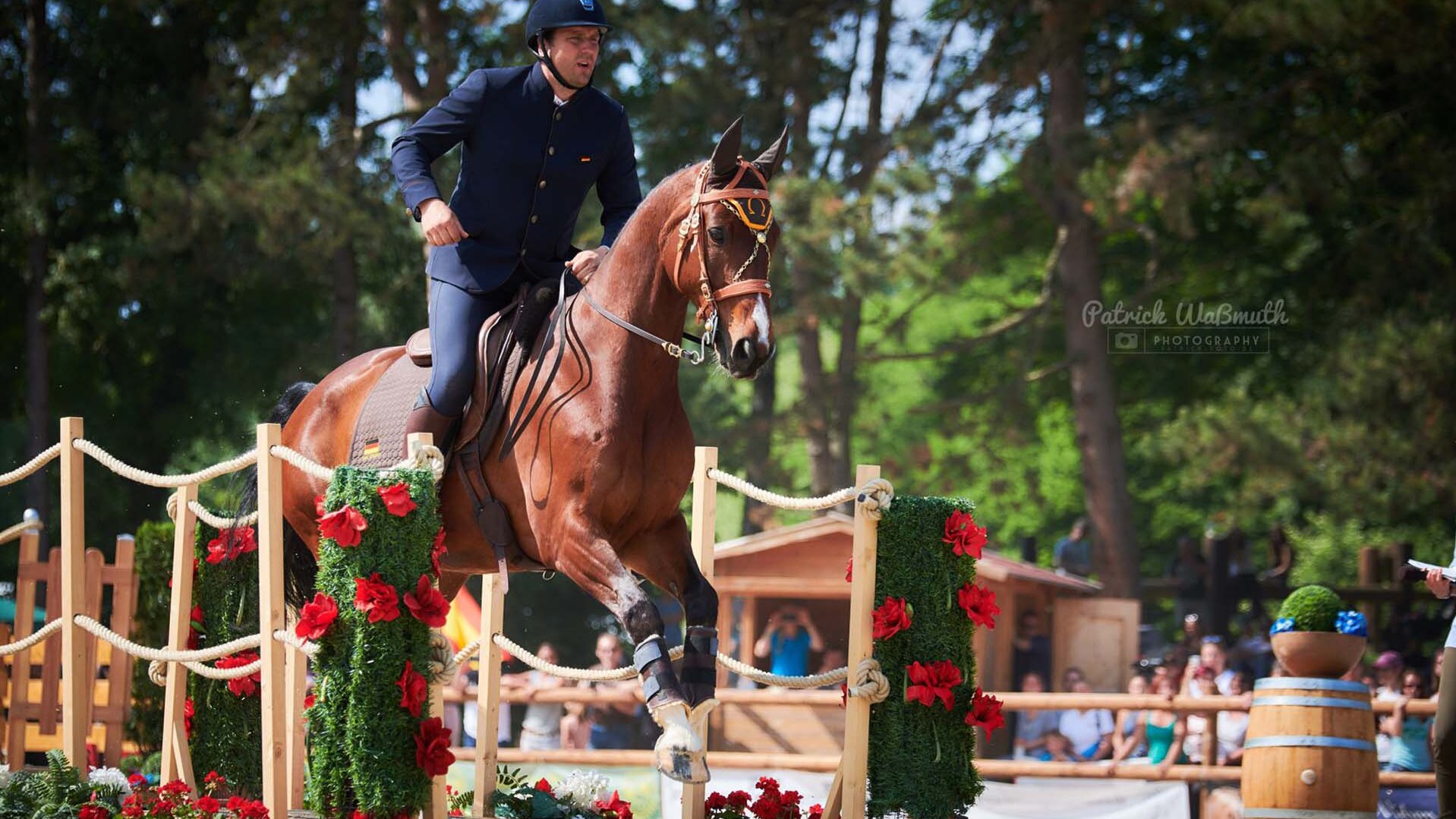
The obstacles in the Working Equitation trail are based on the tasks of the southern European cattle herders on the campos. In their daily work with the horses and cattle, they often have to ride through rough terrain, over bridges and through streams. Opening and closing a pasture fence must also be done skilfully and quickly so that no cattle can escape through the open gate. Almost every working trail contains characteristic obstacles such as the gate, the bridge or the pen.
How do dressage trail and speed trail differ?
The dressage trail is the combination of dressage with the requirements of the individual obstacles. The evaluation of the dressage trail is based on the same criteria as the dressage evaluation. In the speed trail, horse and rider complete a similar course to the dressage trail. This time, however, it is all about speed and a fault-free ride.
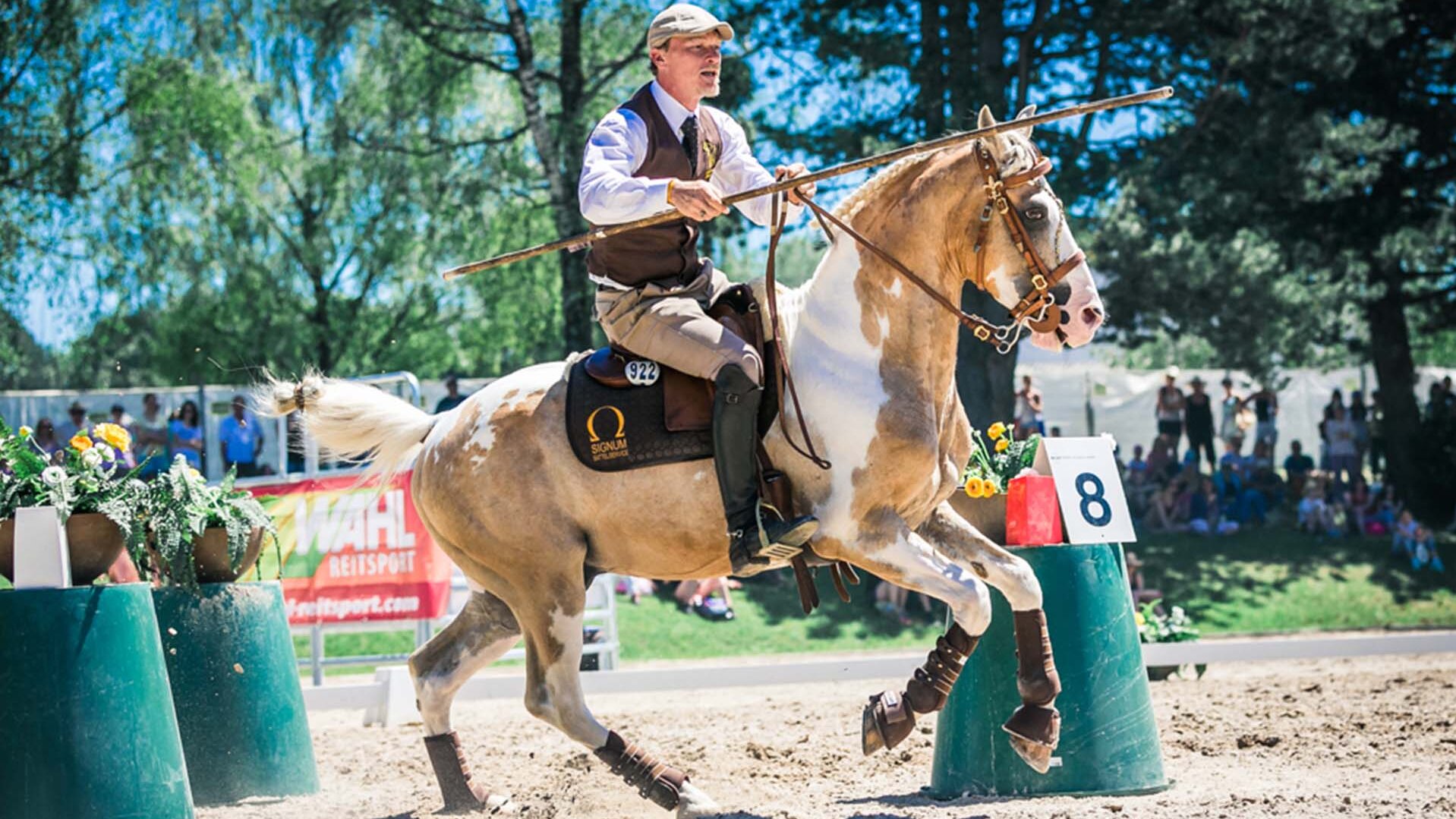
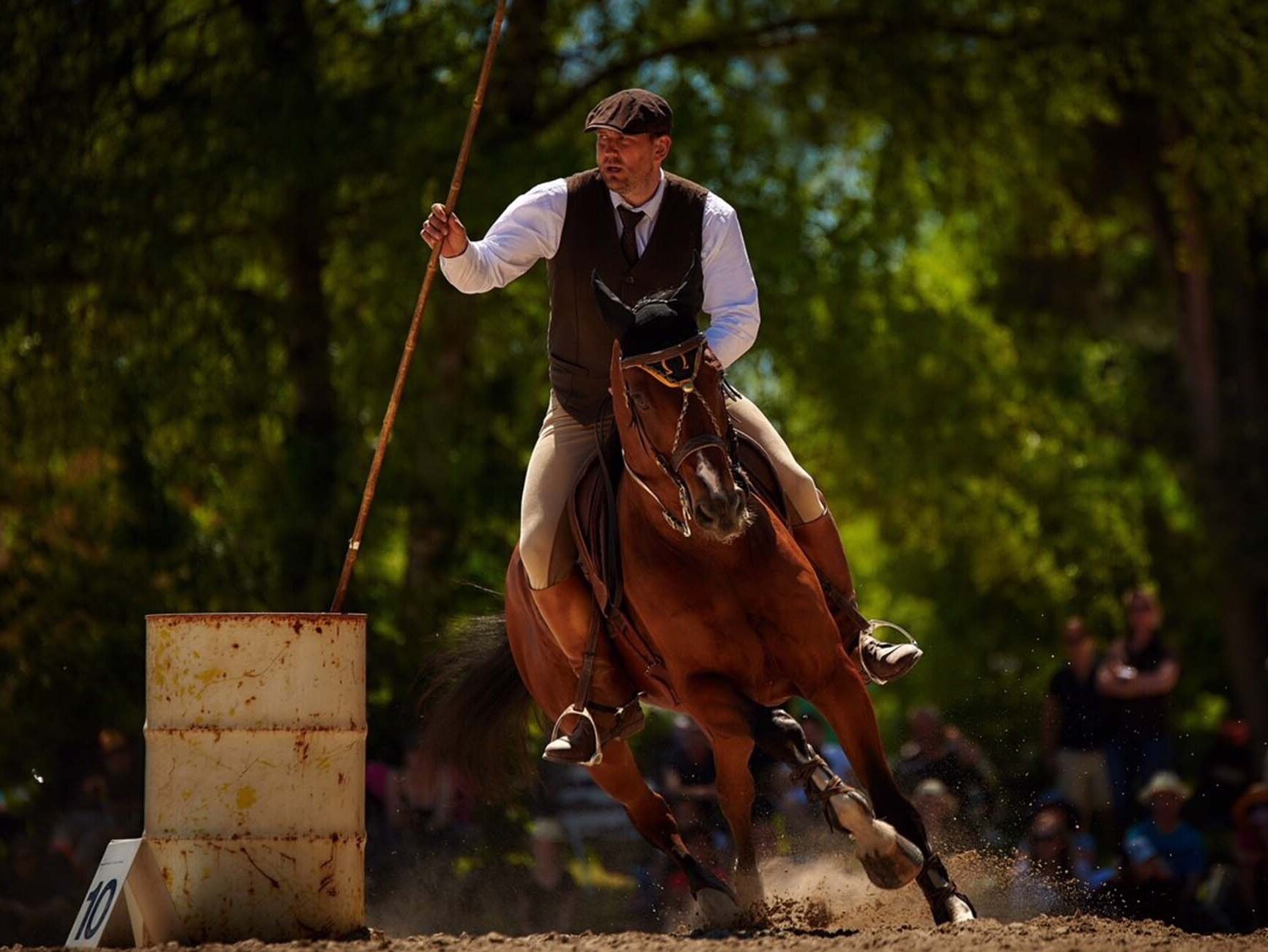
How does the Speed Trail discipline work?
In the speed trail, horse and rider complete a similar course to the dressage trail. This time, however, it is all about speed and a fault-free ride. Mistakes at the individual obstacles are penalised with time penalty points. However, you can also collect bonus points, which give you a time credit. The penalty and bonus points are offset against the total time achieved at the end and influence the final result.
Requirements in the Working Equitation Trail
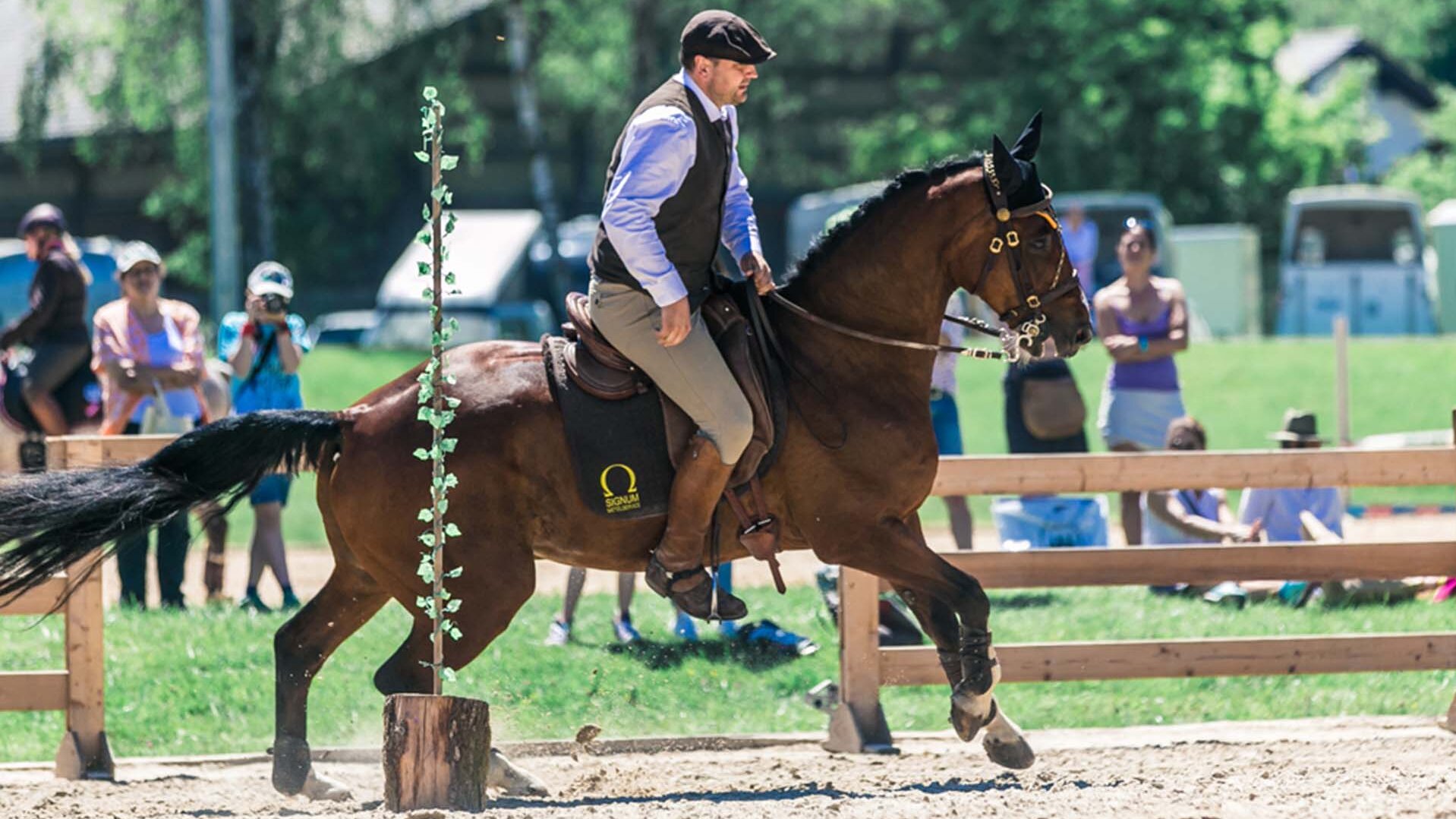
The way in which the individual obstacles are tackled is defined in the common regulations. The gait and route are defined for each class and for each obstacle. In addition, the level of difficulty required at the obstacle itself varies according to the performance class. In the easy classes such as the WE class for beginners or novices, the trail is only required in the dressage trail sub-discipline, ridden with both hands and at a slow gait. From elementary (L) level upwards and in the higher classes, the speed trail is a required sub-discipline for every rider. In the Master class, the speed trail is also required exclusively with one hand and mostly at canter.
Working Equitation Deutschland e.V. (WED) is the German working equitation association. The WED sets the national Working Equitation regulations.
What must the horse be able to do?
The speed trail not only requires speed and manoeuvrability from the horse, but also perfect cooperation and strong nerves from horse and rider. Horse and rider learn these skills step by step in dressage and dressage trail training. In the advanced class, the speed trail challenges the horse's rideability and power with tight turns, difficult manoeuvres and lessons on a challenging course. In the S class, obedience, courage, a confident demeanour and sensitive reactions to one's own horse are what count. The decisive factors are the right tactics, technically perfect obstacles and a horse that is absolutely flexible and requires only the finest of aids, even when cantering at speed.
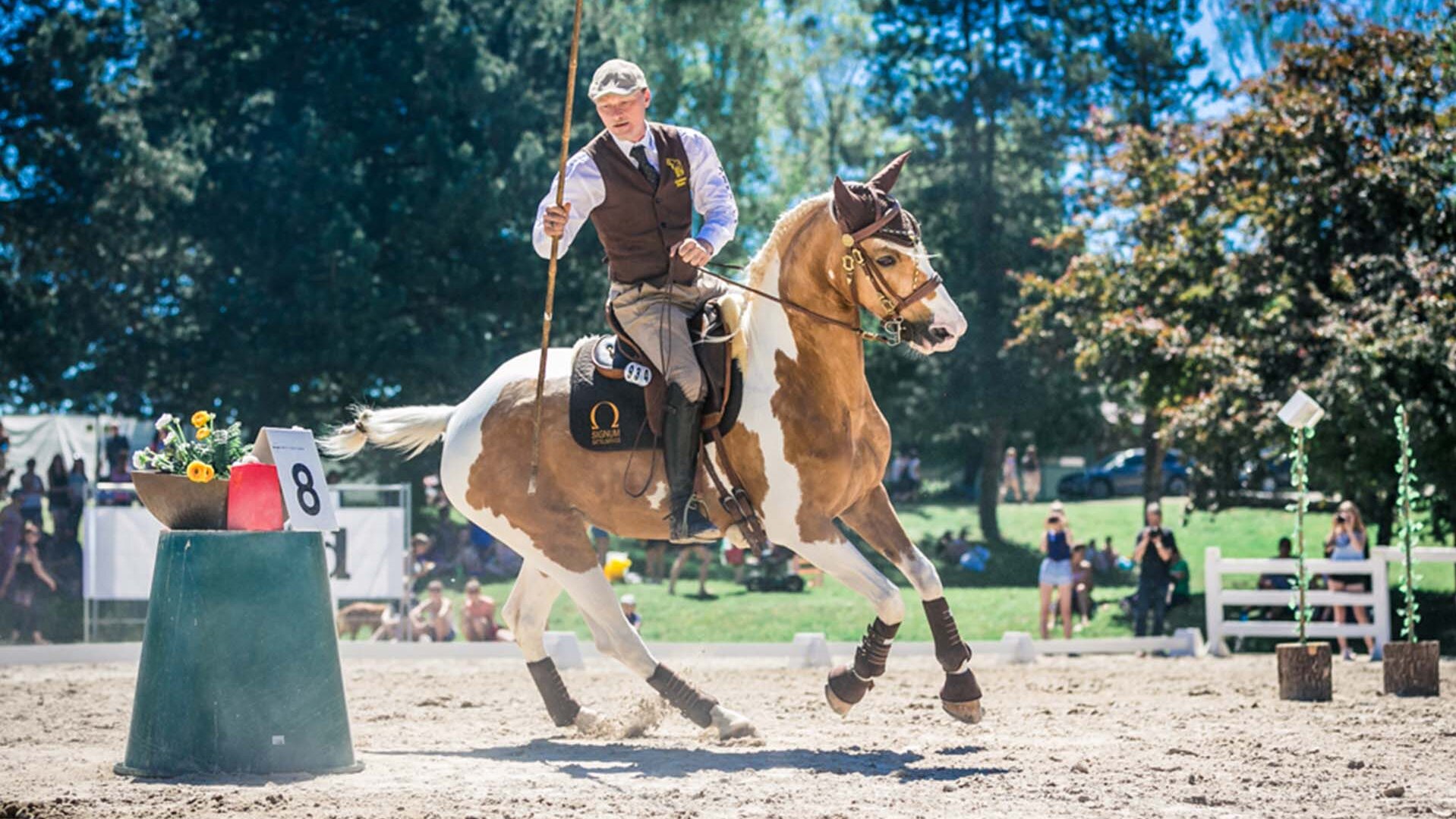
It is important for the rider to maintain an overview. He must be able to accurately assess the strengths and weaknesses of his horse - because a speed that is too fast for the horse and thus overtaxing it will quickly take its revenge in the form of mistakes in the obstacles. A pole or barrel falls too quickly due to inaccurate or hectic riding.
The art of speed trail riding
The art of speed trail riding is to make the ride look like child's play. Overcoming a wide variety of obstacles in perfect harmony and sometimes at very high speed and not letting the time pressure and possibly the best times already set throw you off your stride. The best time can only be achieved if the balance between speed and control is not lost - even if you try to give it your all!
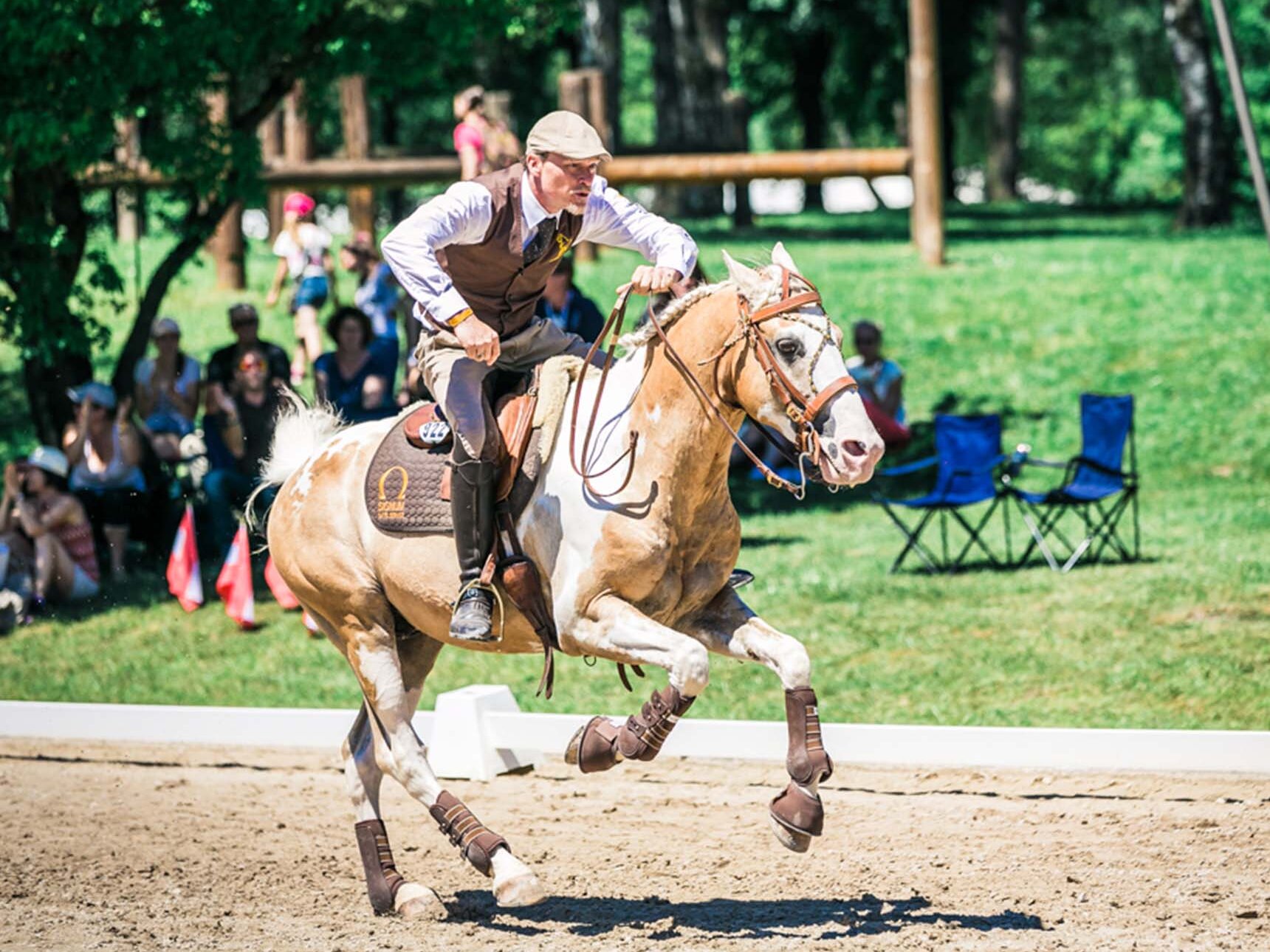

Working Equitation Highlights
At trade fair events, tournaments and championships, cattle work enjoys the greatest public appeal alongside speed trail. Cattle work is ridden at the German championships according to national German regulations in individual classification or at international championships in team classification. You can find out more about cattle work here (link)
An unforgettable experience for all Working Equitation fans was the 2018 World Championships in Munich-Riem, where the German team won the gold medal as a team and in the cattle work! The 2018 championship team was made up of Mitja Hinzpeter, Gernot Weber, Thomas Türmer and Mirjam Wittmann.
The first German Working Equitation riders would never have dared to dream of this at their first championship 10 years earlier. Stefan Baumgartner, Rolf Janzen and Roland Heiß were among the first Working Equitation riders in Germany.
What equipment do you need for the speed trail?
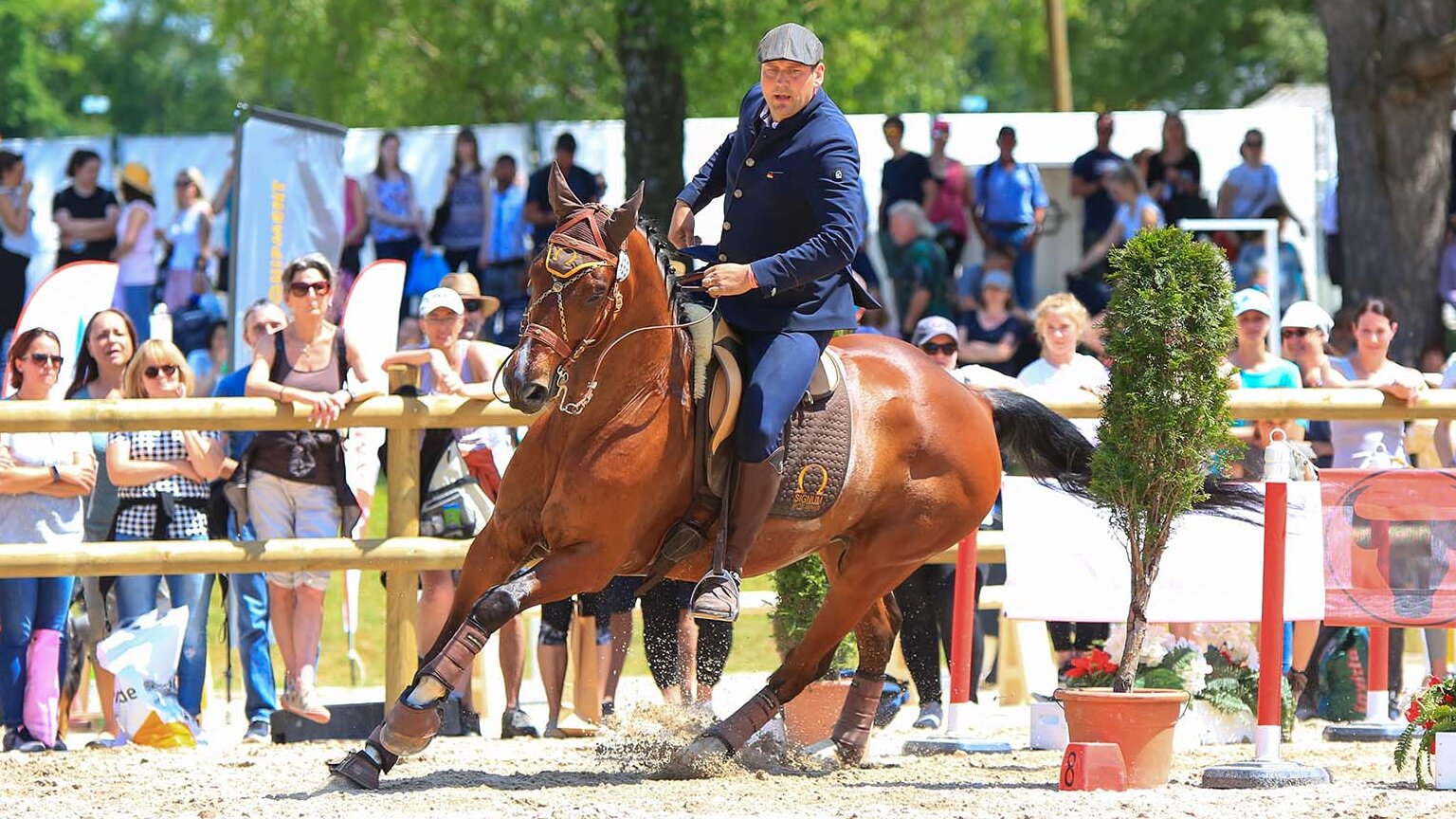
- A Working Equitation saddle that suits the horse and rider and sits well, even in dynamic manoeuvres, stops or tight turns
- A well-fitting bridle and, if necessary, breastplate, which must not slip or restrict the horse's movement
- Gaiters and bell boots to protect the horse's legs
- A comfortable competition outfit in which the rider can move easily
- Well-fitting riding boots or riding shoes with chaps
Which saddle for Working Equitation
Characteristic working saddles developed in parallel with the development of southern European working riding styles and the horse breeds typical of these countries. The traditional working saddles usually had conspicuously high galleries, which were intended to provide a firm seat, especially in dynamic moments. As different as working saddles look at first glance, what they all had in common was a large contact surface for the horse. Only with a large pressure distribution that was gentle on the horse's back was it possible for cattle herdsmen to spend many hours a day travelling with their horses without impairing them.
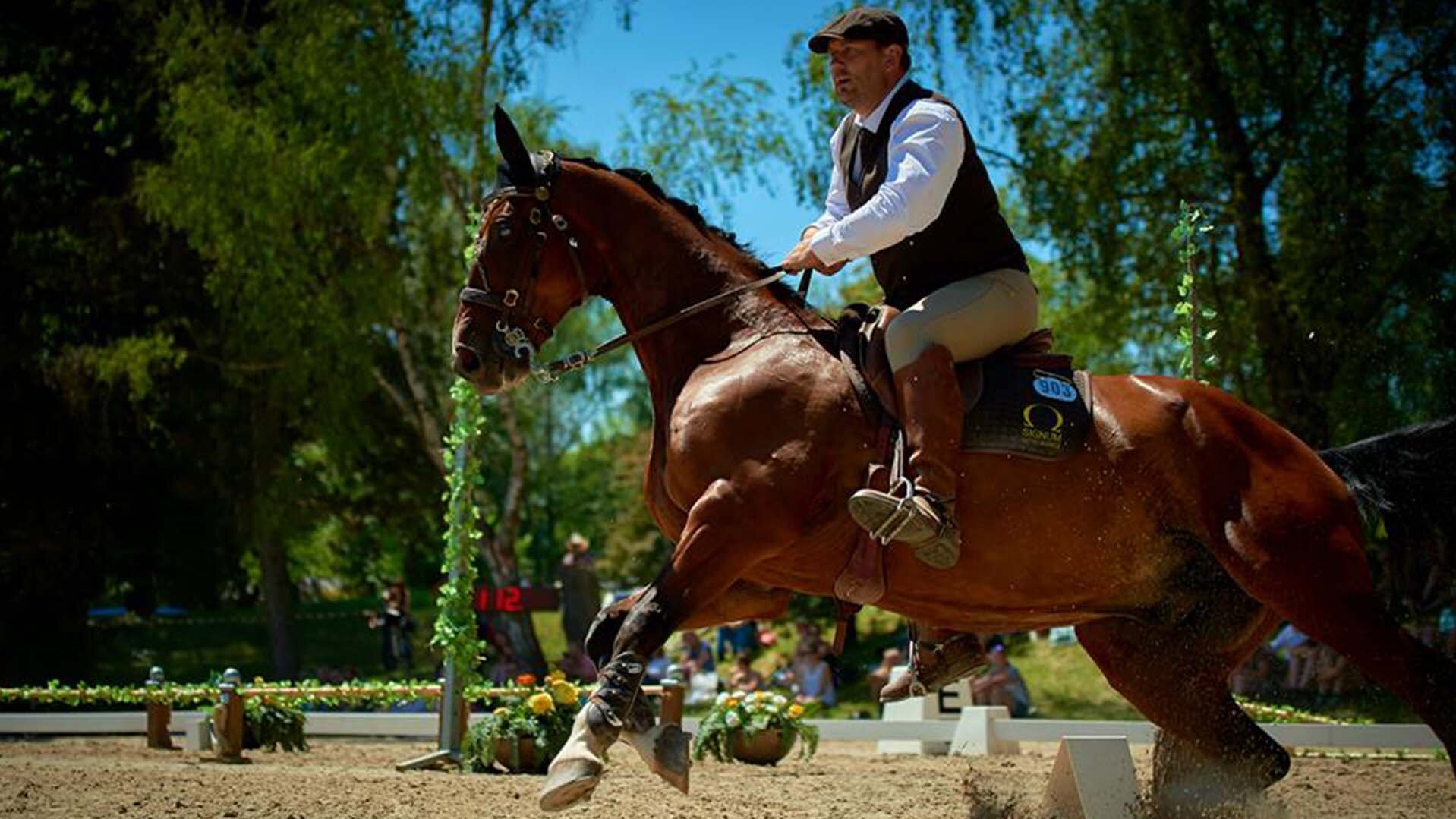
At SIGNUM, we have made the large contact surface the central element of our saddle concept, consciously retaining the advantages of traditional working saddles and combining them with a modern and innovative saddle concept. The rider can customise the feel of the saddle by choosing the seat depth, seat width and knee rolls. For Working Equitation, a narrow, deep seat is often combined with a wide cantle and prominent knee rolls for a secure seat in the Speetrail and on the cattle. Today, we at SIGNUM can offer you a variety of saddles as large as the variety in Working Equitation itself.
Our most popular Working Equitation saddles are: OMEGE Tulipa, OMEGA Worker, Working Equitation saddle El Torro, OMEGA Rose, OMEGA Vario Classic.
Which show outfit for Working Equitation?
The model of stylish equipment also applies to the rider. This is both elegant and functional in accordance with the requirements of a working riding style. Every element of the equipment has a meaning and purpose for daily work. Unnecessary jewellery, filigree decorations or even glittering ornamental parts would be out of place here.
The riders' outfits are based on clothing and equipment in muted colours. A long-sleeved shirt with waistcoat for the rider is combined with a neckerchief or tie, plain riding breeches and boots. In our shop you will find stylish and fairly produced Working Equitation clothing from Working Equitation Basics to the stylish waistcoat from Vorreiter - click here for the collection.
